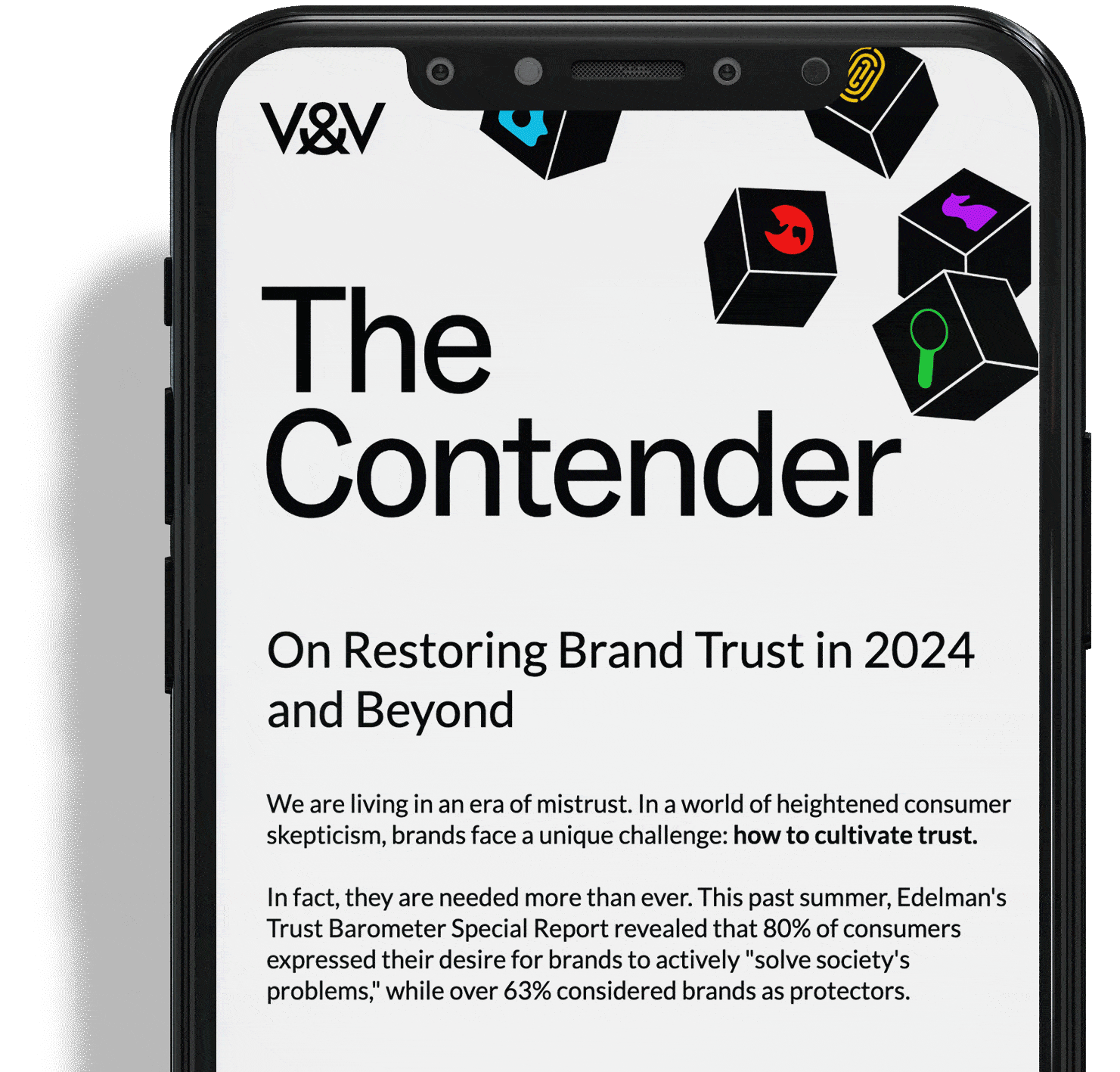Well, that’s a wrap on Black Friday and Cyber Monday. Now’s the perfect time to pause, take stock of what worked (and what didn’t), and start mapping out next year’s moves.
But here’s the bigger question on our minds: can Black Friday and Cyber Monday (BFCM) be more than a celebration of consumption for consumption’s sake?
What if BFCM became a new kind of value exchange—a chance to champion sustainability, strengthen communities, and create real impact while still driving revenue?
At 5&Vine, we think Challenger Brands are already showing that BFCM can be a force for good. Here are some ideas and real-world examples to inspire you to rethink your approach next year.
Opt-Out, Stand-Out
The Status Quo – Offer a deal.
This year, a number of brands dared to do the unthinkable: walk away from Black Friday altogether. Patagonia and Fjällräven stuck to their guns, doubling down on their belief in the timeless quality of their full-priced products, refusing to join the BFCM noise. And luxury brands like Tiffany & Co. steered clear of discounts entirely, safeguarding their reputation for exclusivity and elegance.
It’s a bold move, no doubt. But it’s also a strategic one. For challenger brands, it’s proof that opting out isn’t about missing out—it’s about making a statement. Sometimes, saying “no” to BFCM speaks louder than any sale ever could.
Incentivizing Circularity
The Status Quo – Discounts drive volume. Volume drives waste.
Challenger Play
What if BFCM wasn’t just about clearing out stock but sparking a catalyst for a circular economy? Think incentivizing customers—through in-store credits, perks, or discounts—for returning items they no longer need. Instead of heading to landfills, these items could be refurbished, resold, or upcycled into something new, creating a continuous cycle of value.
This goes beyond ticking the sustainability box. It’s about making your values unmistakably clear to your customers. Circularity becomes a shared mindset, transforming BFCM into something far more meaningful than a discount frenzy.
Take IKEA Canada’s Green Friday campaign as a prime example. Rather than encouraging customers to buy more stuff, they invited them to sell back gently used furniture in exchange for savings on future purchases. This wasn’t just a one-off PR move—it aligned with their long-term commitment to becoming fully circular by 2030.
Challenger Insight: Circularity isn’t just a sustainability move—it can be a loyalty driver. When you tie every transaction to something bigger, you create deeper connections that set your brand apart in a sea of same-old discounting.
Out with The New
The Status Quo – Newness is king.
Challenger Play
What if we shifted BFCM’s focus from “new for newness’ sake” to celebrating what already exists? Spotlighting refurbished or repaired items keeps the thrill of a good deal alive while rejecting throwaway culture. It’s a bold but simple pivot that reduces waste but also champions longevity and reframes quality as timeless, not trendy.
By encouraging customers to buy items with a story, you position your brand as thoughtful, trustworthy, and forward-thinking. Refurbished doesn’t mean “less than”—it signals a smarter, more sustainable choice that resonates with value-driven shoppers.
Back Market’s Black Friday campaign nailed this approach. They didn’t just offer refurbished tech as a cheaper option for gadgets; they redefined it as a cooler, smarter way to shop. Through engaging and quirky messaging, they showed that buying refurbished isn’t just good for your wallet—it’s great for the planet too.
They took it a step further with their “Shake ’n Make” feature, encouraging customers to trade in old devices for a discount. This turned BFCM from your typical sales event into an opportunity for customers to rethink their relationship with electronics and actively reduce e-waste.
Challenger Insight: Rethink what it means to deliver value. By championing products that last, you challenge customers to reconsider our obsession with newness
Community Service
The Status Quo – Buy more, get more.
Challenger Play
What if you reward customers for how much they give, not just what they buy? Instead of linking perks to purchases, tie them to actions that make a real impact—think volunteering, donating, or supporting great causes.
This is more than just creating a fleeting feel-good moment. It’s about showing customers that when they shop with you, they’re part of something bigger. This approach positions your brand as a true partner in driving change—not just another player in the discount race.
Tropic Skincare made this idea front and center in their Give Back Friday campaign. No discounts. No doorbusters. Instead, they committed to funding one day of education for children in marginalized communities for every £80 their customers spent on Black Friday. Their goal? Fund 20,000 school days through the campaign.
What stands out here is how Tropic turned their customers into collaborators. Every purchase wasn’t just about skincare—it was about making a difference. By tying their sales to purpose, Tropic made every transaction feel more meaningful. This is how you build a connection that lasts long after the sale ends.
Challenger Insight: Connect purchases to purpose. When brands align shopping with impact, customers don’t just buy from you—they buy into what you stand for
Rethinking BFCM Success
Here’s the bottom line—BFCM doesn’t have to fuel the cycle of overconsumption. For Challenger Brands, they’re an opportunity to do more, mean more, and lead with purpose. By approaching them through a Challenger lens, brands like yours can create deeper connections, spark social impact, and rethink what success really means.
As your team reflects on this year’s BFCM results, think about how you can create a new playbook for 2025. The opportunity to lead and make a bigger impact is right in front of you.







